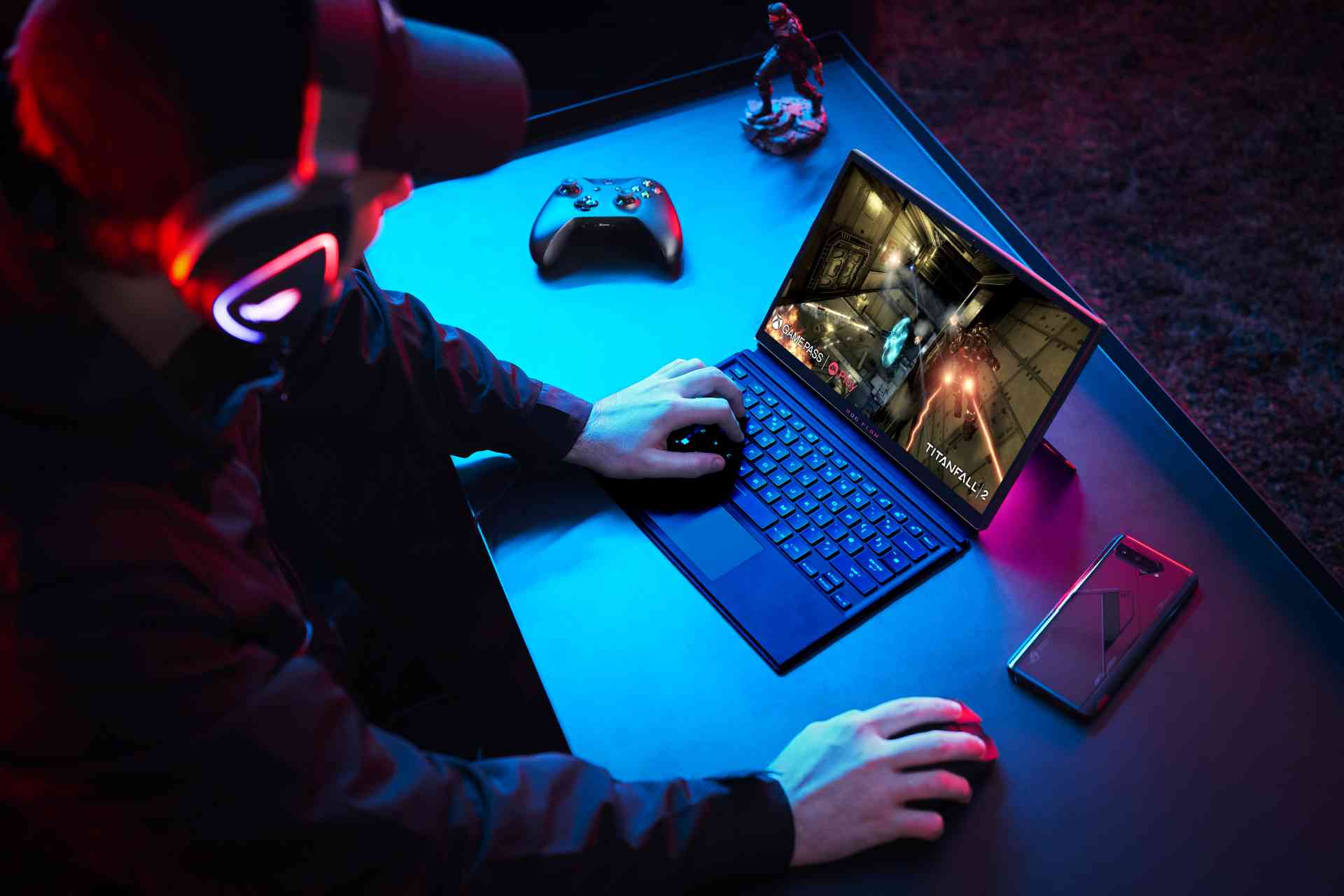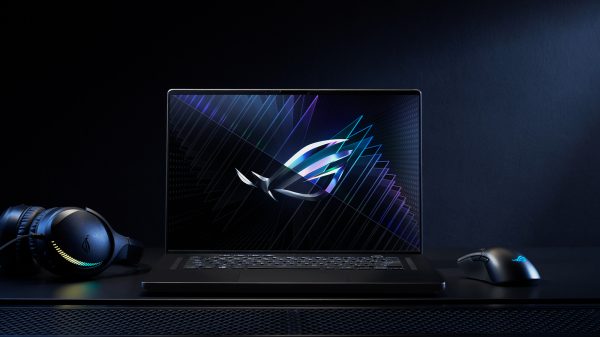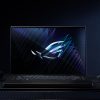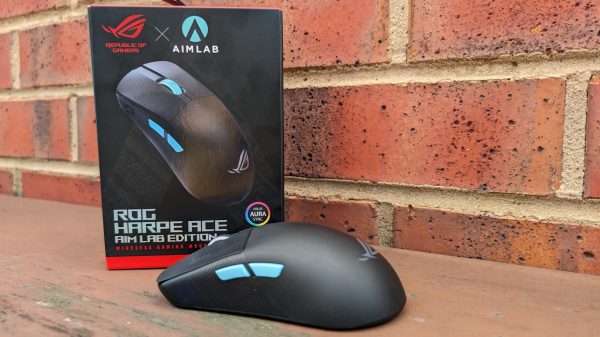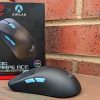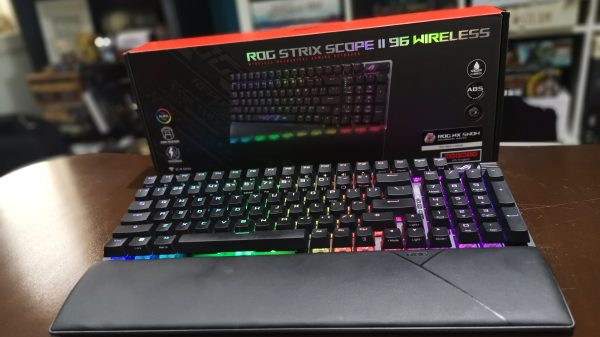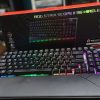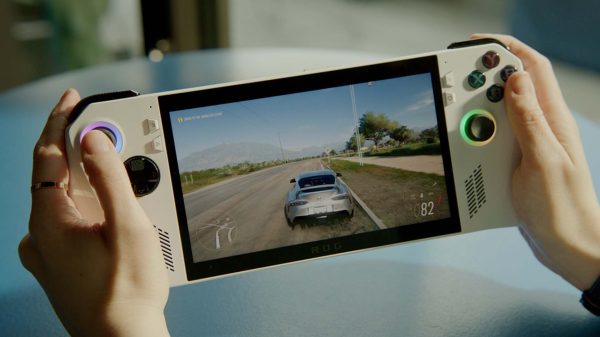ASUS has continued to come out kicking with their latest line of products, with the ASUS ROG Flow Z13 being one of the most creative takes on gaming laptops that I have personally seen in a while. The last ASUS product I reviewed was the Zephyrus Duo 16, and while it wasn’t offensively bad, it was a little disappointing that its performance left so much on the table, being held back by thermals and a reliance on bloatware. Thankfully, while the Flow Z13 isn’t perfect, I felt much better about my time using it.
Out of the box, the ASUS ROG Flow Z13 [Flow Z13] is most easily described as ASUS’ answer to the Microsoft Surface line of laptops/tablets. Because it isn’t a conventional laptop, the Flow Z13 packs all of its goodies in the same chassis as its display. There’s nothing to unfold in order to work with it, instead, it’s more like how the Surface operates. Out of the box, the Flow Z13 includes:
- ASUS ROG Flow Z13 tablet
- 1x Backlit Chiclet Keyboard 1-Zone RGB/Touchpad
- Dimensions: 30.2 x 22.0 x 0.56 cm
- Weight: 0.34 Kg
- 1x ASUS Stylus Pen
- 1x Type-C, 100W AC power adapter
- ASUS ROG Flow Sleeve (optional)
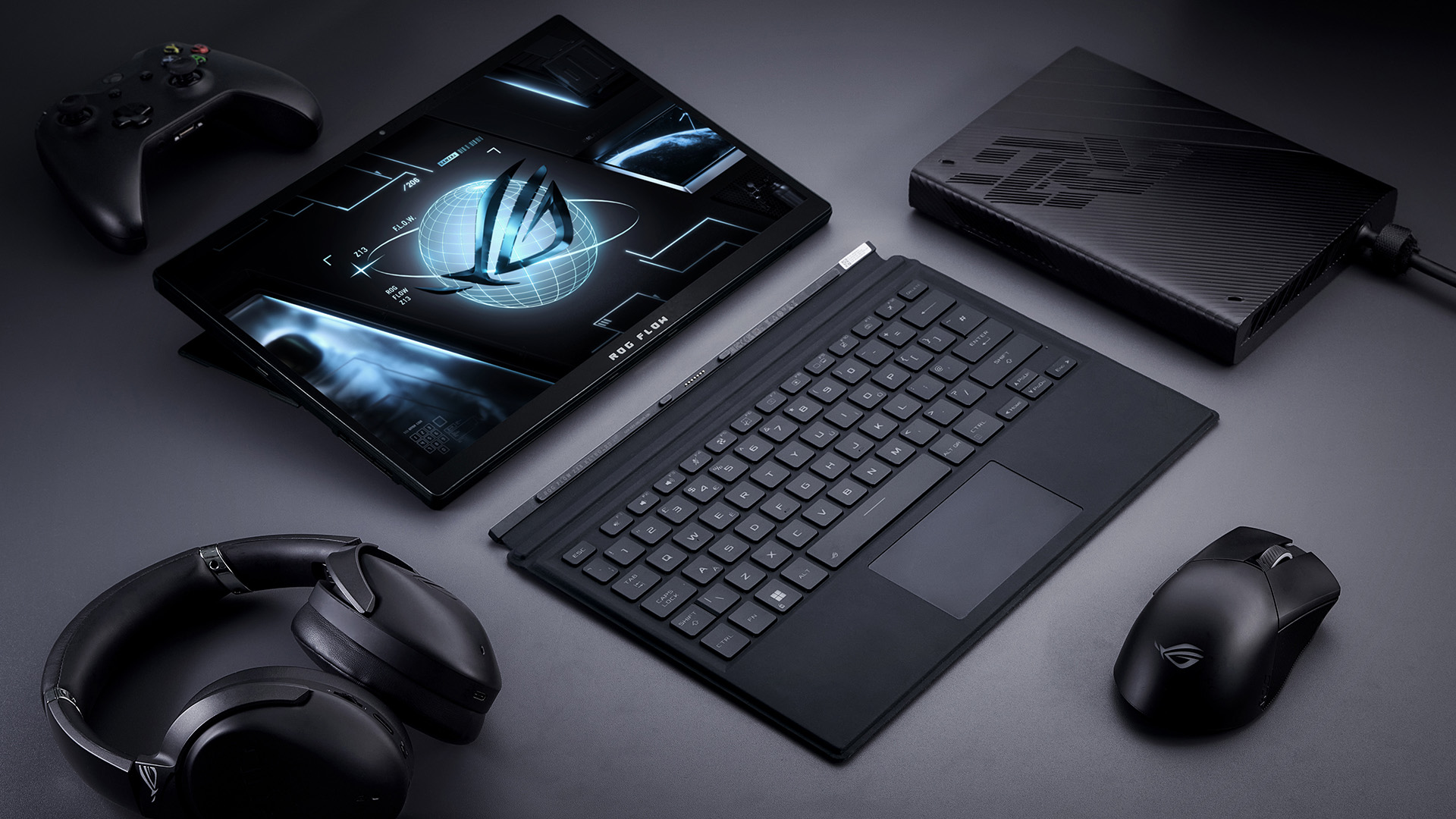
There’s a lot to unpack in the initial impressions with the Flow Z13. For starters, the screen is beautiful. Because it is more poised as a tablet rather than a laptop, it makes use of a glossy screen rather than a matte screen, which allows for slightly more colour depth than the alternative. The first thing I did once I saw the included stylus was download Krita (a free, open-source photo editing application) and started doodling on it, creating some assets for use in my other line of work. This is where I was quite surprised with the Flow Z13. The stylus glides across the screen so beautifully, and I adored every moment that I had with this tablet in this use case. Additionally, the battery is entirely replaceable on this stylus, with the back end able to be unscrewed and a single AAAA battery on the inside (I am always a fan of user-serviceable things like this).
Continuing on with its initial impressions, it was here where I very quickly found my first problem with its design, but it is something that you would only encounter if you laid it flat as a drawing surface (many artists like to have these devices propped up rather than laid flat). If you were to lay it flat, you would notice the lightbar on the back of the chassis makes the device relatively unstable, as it protrudes from the back. This is by no means a deal breaker, but rather something which is worth noting, as this device serves a wide variety of purposes.
Moving on from that, we find ourselves with the included keyboard attachment. As someone who has just recently gotten a custom keyboard (which I am honestly obsessed with using), this keyboard had the world against it, but I was still pleasantly surprised at how decent it is. It’s not going to set the world on fire, but it will certainly get the job done. It features backlighting which helps when using it in dark environments and a trackpad that makes the whole package feel like a laptop. I was impressed by how strong the magnetic connector for the keyboard attachment was – it’s not falling off or physically disconnecting anytime soon, you can be sure of that. What made using this even easier was the surprisingly robust kickstand. The spring in this kickstand was way tougher than I expected, it will first start giving resistance after being opened just a little bit, but it will continue to open until it hits an angle of over 270°. This will only slightly prop up the Flow Z13 which makes it really good for people that like drawing surfaces that are slightly raised.
Much like the Zephyrus Duo 16, and any OEM laptop for that matter, the Flow Z13 comes with preinstalled software (read: bloatware) and this is by far the worst point of this device. It still has the same software that the Duo 16 had, but it also has an additional piece of software that I immediately sighed upon seeing – McAfee Antivirus. Now, I understand people’s desire to feel secure with antivirus software. However, McAfee is NOT helpful in any capacity and the fact that it immediately forces itself upon you when you first boot up this device is frustrating. ASUS is known for bloatware and this exacerbates the issue as McAfee is arguably one of the single worst antivirus software around (with some users even going far as describing it as a virus itself). The inclusion of McAfee is by far the single worst part about this device – I’d highly recommend instantly uninstalling it if you were to purchase the Flow Z13.
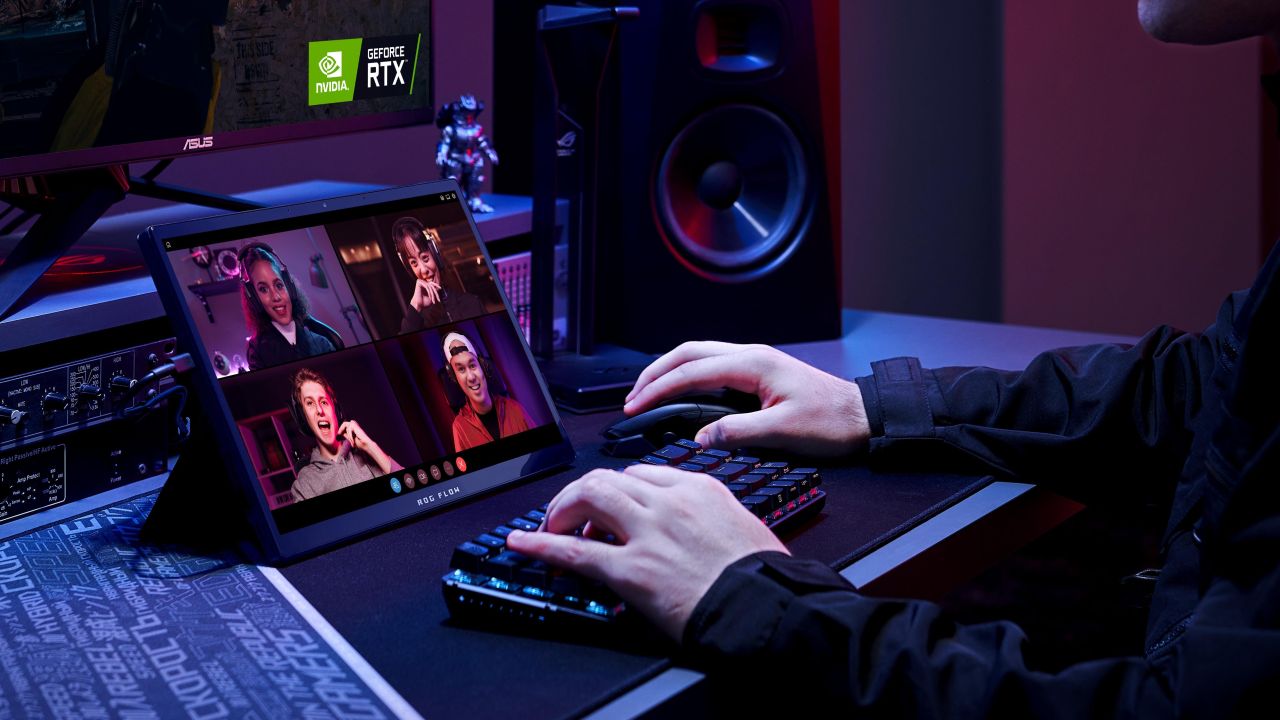
One of the Flow Z13’s weaker points is its general I/O or lack thereof (without the use of the XG Mobile eGPU attachment that you can get). On its own, the I/O on the Flow Z13 is as follows:
- 1x USB 3.2 Gen 2 Type-C
- 1x 3.5mm Combo Audio Jack
- 1x USB 2.0 Type-A
- 1x Thunderbolt™ 4 support DisplayPort™
- 1x ROG XG Mobile Interface
- 1x card reader (microSD) (UHS-II)
- 1x USB 3.2 Gen 2 Type-C support DisplayPort™ / power delivery / G-SYNC
This may seem like a lot, but there are a few caveats. The DisplayPort compatible USB Type-C port is covered under normal circumstances, as it sits next to the ROG XG Mobile Interface, which generally necessitates the use of the port cover when it (the port) is not in use. For all intents and purposes, the lone USB Type-C port, USB Type-A port, and the 3.5mm headphone jack are the I/O ports that are readily available. Accessing the MicroSD slot isn’t too difficult, but given that it is hidden underneath the kickstand which can be flipped up on the back of the Flow Z13, it still is not quite as accessible as the other I/O ports.
As previously mentioned, the XG Mobile eGPU attachment actually expands the I/O availability, as it doubles as a hub as well as an external graphics card. With the XG Mobile attached, you gain:
- 4x USB Type-A
- 1x DisplayPort 1.4
- 1x HDMI 2.1
- 1x RJ45 Ethernet Port
With the XG Mobile, the I/O availability is greatly expanded, as you can see. The intent here is for the hub to be used in a more desktop-style setup, rather than just your typical laptop use case. This would be really useful if you wanted to play games using a better keyboard and a mouse (because virtually no one plays games with a trackpad).
Thankfully, the XG Mobile is not the only way to enjoy the gaming performance of the Flow Z13, as most models come with a decent graphics card inside it. There are four models of the Flow Z13 which come with varying specifications and at varying price points. Here are the specifications of the unit we were provided with for the review:
- CPU: Intel® Core™ i9-12900H processor (2.5 – 5.0GHz)
- GPU: NVIDIA® GeForce RTX™ 3050 Ti Laptop GPU (4GB GDDR6)
- Memory: 16GB DDR5 5200MHz (2 x 8GB)
- Storage: 1TB PCIe Gen 4 NVMe M.2 SSD
- Network & Communication: Wi-Fi 6E (802.11ax) Dual Band, Bluetooth 5.2
- Display: FHD 13.4” (1920×1200) 120Hz Dolby Vision HDR IPS (30ms response time)
- Battery: 4-cell Lithium Ion battery, 4S1P, 56WHrs
- Power Supply: 100W AC Adapter
- Camera 8MP camera and 720P HD camera
- OS: Windows 11 Home
- Price: $3499 (from JB Hi-Fi)
For such a small package, the specs are pretty solid, but there are a lot of thermal challenges to having that much power go through one chassis. Monitors produce a surprising amount of heat that would be dumped into the cooling solution, however, the use of a vapour chamber here, as well as liquid metal, help mitigate some of the thermal challenges that this form factor presents. What is cool is that the Flow Z13 we were provided with has a 3050 Ti in it, which is just enough to handle a lot of games very competently while also not taking too much power. The power draw could always be better, as NVIDIA’s cards (especially the RTX line of GPUs) have suffered from problematic transient loads for a while now, but that is far too technical for me to get into inside a laptop/tablet review. All things considered, the use of a 3050 Ti in such a restricted form factor is a brilliant choice, balancing power and thermals. The 2021 XG Mobile unit which was provided with the review unit housed an NVIDIA GeForce RTX 3080 inside of it, which is a massive upgrade from the 3050 Ti that is already included inside the Flow Z13. Naturally, I benchmarked the Flow Z13 with and without the XG Mobile eGPU with Forza Horizon 5, a well-optimised game that offers its fantastic benchmarking tool.
Forza Horizon 5 Benchmark
It’s no surprise that using the XG Mobile sees a significant performance uplift, with a recorded increase in average FPS from 35.5 to 90.7; an increase of just over 255%. I was honestly impressed with how well the Flow Z13 handled the Forza Horizon 5 benchmark with all the settings cranked. Extreme settings in this game are not exactly light on resources and the Flow Z13 doesn’t exactly have a lot of resources to play with when it lacks the XG Mobile. Continuing to manage an average of 35.5 FPS and a 99th-Percentile of 30FPS while also maintaining a peak temperature of 78°C on the CPU and 66.8°C on the GPU, both of which are cooled by the one large heatsink, is certainly an impressive feat.
This laptop’s strength really shines with the XG Mobile, however. We already know that it granted a performance uplift of just over 255%, but the thing that makes this even better is how it allows for the thermals to be even lower on the CPU due to the heat from the GPU being removed from the equation. The CPU’s temperature was brought down to 70°C, though admittedly the 3080 inside the XG Mobile struggled a bit with the single fan blower-style cooler, capping out at a very high 79.9°C which is very close to the point of heavy throttling, not to mention hotter climates may see higher overall temperatures.
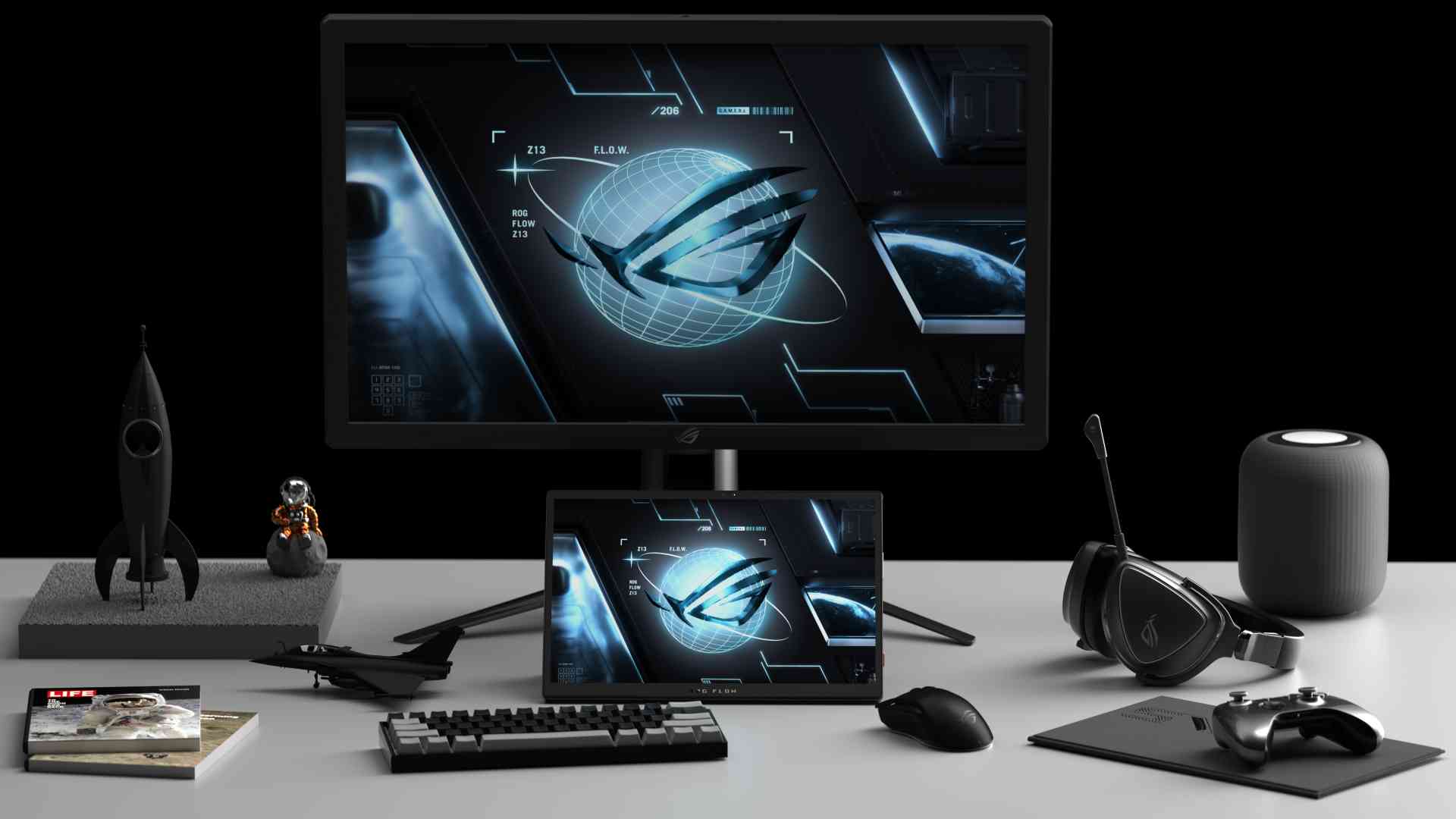
The one thing that was a bit jarring was getting used to the 30ms response time in the 16:10 display of the Flow Z13. 30ms is by no means unplayable, but it felt like I was playing games on my main TV (which desperately needs an upgrade). I’m used to playing at 4ms max, so this increase in response time feels a little out of place, especially when every other gaming-oriented laptop aims for between 1–4ms, with the latter being more common as a caveat for picture quality and colour depth.
The last thing I will really note is that, while upgradability was not the first design focus of this device, I was surprised with how the motherboard was designed to at least allow for ease of access to the NVMe slot. If you lift up the kickstand, you can see the MicroSD card slot on one side, and the cover of the NVMe slot on the other side. Unscrewing this cover will show the teeny tiny NVMe SSD that is preinstalled, but if you wish to swap it out you are more than able to. This ease of access is great, and the fact that this design of the motherboard and the chassis has been made with this ease of access in mind is even better.
Final Thoughts
The ASUS ROG Flow Z13 is a fantastic tablet/laptop which offers a uniquely great experience. It has quite a decent amount of power under the hood and adding the XG Mobile to the equation helps lower some of the CPU temperatures while improving the performance in games as well as more I/O. It’s definitely far from perfect, with its display sporting a 30ms response time, ASUS’ general bloatware and worst of all, McAfee. If you are willing to put in the minor upfront work of dealing with these when you set up the device, I can happily recommend the Flow Z13.
Review unit supplied by manufacturer




Jordan lives and breathes Dark Souls, even though his favourite game is Bloodborne. He takes pride in bashing his face on walls and praising the sun. Hailing from the land of tacos, he is the token minority for WellPlayed.





